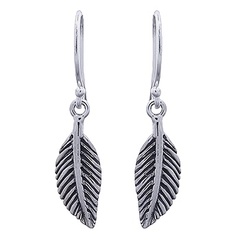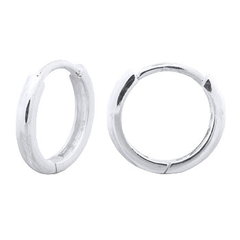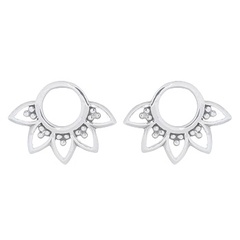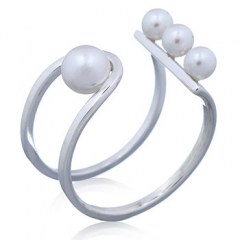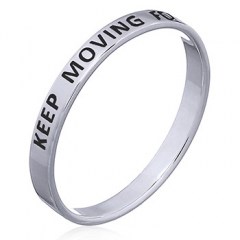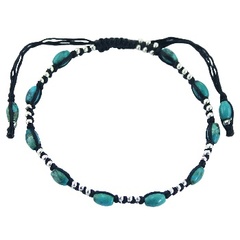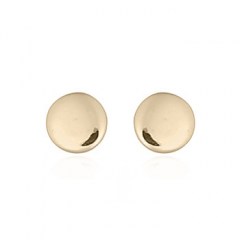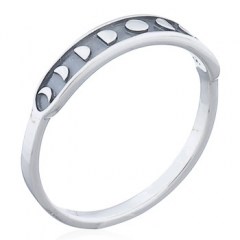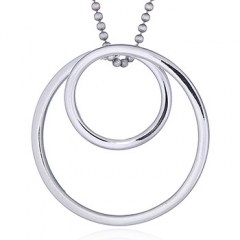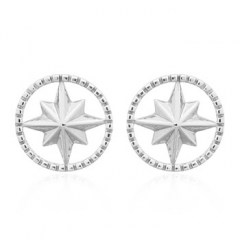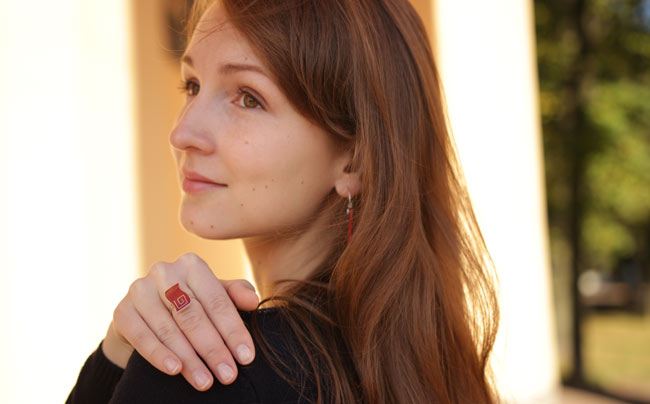
| What is coral? Small sea creatures called polyps create these precious vivid red gemstones. Their tiny skeletons are all made of calcium carbonate that are hard enough to be highly polished pretty much like a stone. Thanks to its natural original color and unique patterns it is very valuable in jewelry. |
We all know that as gemstones and crystals are coming from the depths of our planet they are thought by many to possess powerful energy, but what about the corals? Have you ever heard about different properties of them?
The coral comes from the sea and as long as water is considered to be a soothing matter, the gems we talk about are associated with emotional healing. It is also considered to be a treatment for physical disorders connected with blood and bones.
Some people believe that white coral is woman's gemstone, and the red one is men's. They have different properties and powers so if a woman is wearing coral jewelry she might get more enthusiastic and demanding. That is why the main rule with the coral is to keep balance.
Coral meaning
Corals are precious gifts of the seas. Like pearls with nacre, coral is not a stone – it is a conventional name, which is fixed because of the hardness and strength of the material. Coral isn't even a plant. It's the fossilized skeleton of marine invertebrates! Extraordinarily beautiful and exotic material, which became known to mankind 25 000 years ago. Picturesque coral trees still attract millions of divers around the world with their beauty.
Like pearls, corals, despite their organic origin, are considered as precious stones and are mainly used in the manufacture of jewelry. The color of the coral is presented in all colors from white to bright red. The most popular is the noble or red coral, which includes beautifully colored varieties of red, black and blue. Its value and jewelry quality are determined by its color and in addition - by size and shape of individual pieces.
Corals combine symbolism of a tree (world axis) and ocean (abyss).
Basic meaning:
- sea (water) tree of the mother Goddess, giver of life;
- the lunar beginning;
- creative forces of the water world, water fertility;
- blood;
- insides, "of which the alchemists were interested in»
History and origin
The Greek language gives a translation of the name: corals - the sons of the deep sea. There is also a version that this word comes from kura halos, which means "sea fairies". And indeed - the branches of corals look very similar to small figures. In Arabic, "taral" means "amulet stone". The German "koralle", the Polish "koral", and the Latvian "corallium" are formed from the Greek "koraillon".
For a long time, scientists conducted research, trying to prove that it is not a fossil, but rather a living marine creature — a plant. The philosopher of Ancient Greece the first scientist of Botanical Sciences Toofast believed that the coral – something that combines the properties of fossils and plants of the sea depths. In Rome, a scientist of natural Sciences, a test of the deep sea Pliny the Elder took coral formations to the animal world. The Swedish naturalist Linnaeus had proposed to put the gem in a special group of zoophytes. Description of the mineral found its place among animals and plants. Disputes ended centuries later-at the end of XVIII century.
Mineralogists determine the structure and formation of crystals. Coral shoots and branches – is a fossilized skeleton of the living creatures, invertebrate sea creatures. Creatures that give birth to the coral called "polyp". Living organisms produce a lime mixture. The substance allows corals to grow and, increasing in size, to acquire bizarre shapes. Only trees and bushes can be compared to coral. The length of the branches of the marine creation can reach up to 40 cm, the diameter of the thickness of the processes-4 cm. For large products do not take the branches themselves, but the lower base, the merger of the processes and the place of their branching.
The history of the stone is recorded in the poetic creation of Ovid. The poetic legend offers an interesting version of the appearance of red stones. Perseus, after defeating Medusa Gorgon, demonstrated triumph. He was returning home, flying over the seas. In his hand, Perseus held the head of a monstrously terrible beauty. Drops of blood fell into the sea. They stoned taking various forms looks like resembling streams of spreading blood.
During the excavations on the territory of the Sumerian Kingdom were found objects of red mineral. Age of products-more than 6 thousand years. Scientists suggest that the age of organic formation more than 500 million years, they are part of the first terrestrial organisms.
There are many more mysteries in the history of the stone. Take Russia for example where ancient people cut out balls of corals. In history books there's no information about this fact, nor of the reasons of it. It is also unclear why they were placed into coffins in Slavic tribes. There are different versions of such finds. According to one of them, the red corals must protect a person who enters the underworld from the devil's charms, so that he does not get into the dark part of the underworld. 15 coral balls were even found in the grave of the great Russian ruler – Boris Godunov.
Physical properties
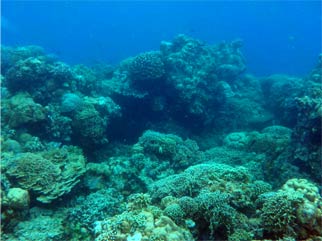
Corals are a waste product of living organisms. Each coral twig is made up of millions of polyps - tiny living organisms whose size does not exceed 1-1.5 mm. Each such tiny polyp forms a protective calcareous shell around itself. Gradually, the shell solidifies to a state of stone, forming a kind of "skeleton" on which young invertebrate organisms are already settling. So coral twigs “grow”, and they grow extremely slowly! About 75-100 millimeters per year. The formation of a reef of average size takes centuries, and the formation of islands - for thousands of years. Therefore, they are protected and will always be highly appreciated. Coral is such a valuable natural material that in many countries it is strictly prohibited by law to export it outside the state (for example, from Egypt).
Corals consist mainly of calcium carbonate. In sea water there are all the necessary components for their growth. Different types of corals contain different types of organic matter. For example, black Indian coral is almost 100% organic.
Coral looks differently on underwater shooting than in the hands of a jeweler. The characteristic composition of the mineral is calcite (85%), magnesium carbonate Mg, iron oxide Fe, manganese Mn (15%).
Physical properties of coral formations:
- wax shine and gloss;
- nontransparent structure;
- amorphous syngonic form;
- hardness level is 3-4 level; density coefficient from 1.3–2.6 g / cc;
- splintery kink.
The most beautiful appearance of coral can be seen in jewelry.
Coral metaphysical and magical properties
First jewelry pieces made of red coral date back to three thousand years BC therefore today we have a bunch of myths and beliefs about coral.
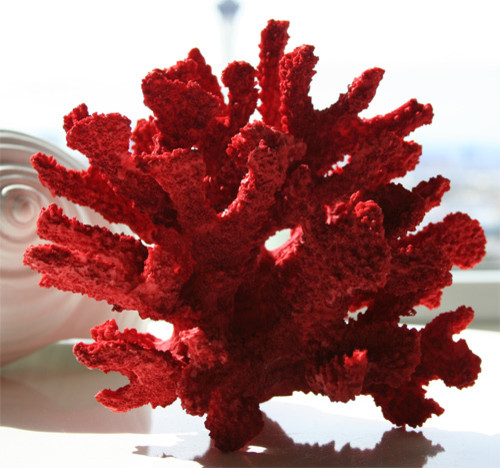
- If we go back to the Greek folklore, red coral is said to appear from the blood drops from the head of Gorgon. Later little nymphes got them under the sea water where they became solid and planted. Later coral in Ancient Greece was associated with long life.
- Speaking of the magical properties, Native American tribes thought the coral was able to hold the evil away.
- In Middle Ages and Victorian times parent would give corals to their kids to stay safe.
- Sailors believed that coral is able to keep them unharmed during severe lightning storms. Generally coral is considered to be a guardian for travelers and a symbol of a safe trip.
Coral healing properties
This natural stone has healing properties. It is used by healers from different countries.
In ancient Rome, corals were used to heal wounds and accelerate bone healing. They made powder from stones and treated sore spots with it. In this country, the remedy was also used to neutralize poisons from snake bites and poisonous insects.
The healing and disinfecting property of a stone is also recognized by modern lithotherapists. The therapeutic property of coral beads has also been confirmed by lithotherapists. They are advised to wear for colds and throat diseases. Such beads also need to be worn regularly to people whose voice is the main professional instrument, for example, singers, teachers or speakers. This natural stone improves blood circulation and blood. It must be worn by people suffering from diabetes, anemia and other diseases of the circulatory system. Stone coral improves memory, helps to focus and tones.
If a person is struggling with excess weight, he needs to pay close attention to coral. It reduces appetite, so the amount of consumed food decreases. Weight loss also takes place as the stone removes toxins and wastes from the body. In Japan, coral is used for dental prosthetics. This stone can be used for early detection of diseases. In this case you should wear it constantly and pay attention to how it looks. If dark spots appeared on its surface or the luster disappeared and even cracks appeared then this should be perceived as a sign of an emerging disease. A visit to the doctor will help to clarify the situation.
Some astrology
Astrologists say coral can be worn by all zodiac signs especially it is good for people born under the water sign - Scorpio, Pisces and Cancer, as the coral comes from water and is generally associated with this element.
| Signs of the zodiac | Compatibility (“+++” - fits perfectly, “+” - can be worn, “-” - is absolutely contraindicated) |
| Aries | + |
| Taurus | + |
| Gemini | + |
| Cancer | +++ |
| Leo | + |
| Virgo | - |
| Libra | + |
| Scorpio | + |
| Sagittarius | + |
| Capricorn | - |
| Aquarius | + |
| Pisces | +++ |
Pisces zodiac sign is perfectly compatible with coral. Astrologers advise to wear stones of red and brown tones. The coral will suit ideally to Cancers as well. They are advised by astrologers to opt for corals of pink tone. Zodiac signs Aries and Taurus can safely wear coral. It will become a protective amulet for Aries and bring a good luck to Taurus. Signs of the zodiac Libra and Sagittarius should not decline to wear jewelry with coral gemstone. Energy of the stone give them positive influences. For Libra the gemstone helps to make new contacts with people. Gemini will be protected against black magical effects. Zodiac signs Leo and Scorpio can wear jewelry with coral as well. For Leo, the coral stone can be a tonic but for people of this sign recomended to wear in case. For Sagittarius coral will bring a good luck, if its tones are red or pink.
Zodiac signs Virgo and Capricorn should not wear jewelry with coral. They are contraindicated even the slightest contact with the stone.
Note! In addition to the signs of the water element, coral perfectly harmonizes with everyone who was born in the year of the Tiger. It will help pacify their violent temper and fill them with wisdom and tranquility.
| When you place a coral in your household it does not only provide a decorative pleasure but might as well invite luck to every person, inspire them for creative work and wake peaceful emotions. |
Now after this short introduction to the spiritual properties and believed healing abilities of red coral gemstones you might look differently on your old coral ring or grandma’s pendant. As we could see not only is this gemstone attractive and great for jewelry, but is as well thought to be able to help with several diseases. One might not really believe in that but the fact is that the look of a wonderful handmade piece of sterling silver jewelry adorned with a vivid red coral stone will certainly soothe and inspire the wearer.
Coral color meaning
Coral has a rich scale of colors - more than 2 thousand gradations. There is no such color in nature, which would not have coral. The tone of the stone is affected by its composition. By the way in jewelry we use only 16 types of these stones.
The most popular are only a few types of coral:
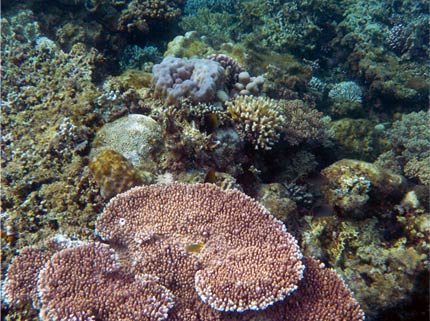
- Pink stone with a silver-pearl luster. This is coral pellet d’angelo.
- Pale pink coral. This type is called rose pallido.
- Hot pink stone. This coral is called rose vivo.
- White coral is called bianco and lives in the Sea of Japan. It is very rare, therefore it is used only in jewelry. The tops of coral reefs are used, where the stone acquires a bright noble color without foreign impurities.
- Orange-pink corals are called Secondo coloro.
- Black stone called Acabar. The difference between this coral and the other corals is that it does not have a calcium core, because it contains horny substance inside. Acabar is the most rare and valuable species, occurring in the waters of the Red sea. It is highly valued by jewelers, who make very expensive and exclusive jewelry with this type of coral.
- Bright red coral. The name of the stone is rosso. Red stone resembles a small bush that does not have leaves. This coral has a high cost. This led to the fact that it was often forged. You can determine the authenticity of a stone by dipping it into milk. A real red stone will color it in a reddish or pink tone. Counterfeit does not give such an effect.
- Dark red coral. They are called Rosso skuro.
- Corals of brown tone are called Arkisuro carbonetto.
- Blue coral is the rarest specimen of this stone. The most expensive coral is a stone of blue tone.
- A completely separate type of coral - fossil corals, which are called "petoskey stones". This type of coral lives in calcareous sediments, whose age is determined by scientists for almost 600 million years! Found these unique fossils in the US state of Michigan. Externally, fossil corals look like agates. Used as an ornamental stone. In fact, the same fossil corals are common in many mountainous regions of Russia, but have not yet been developed.
The most qualified types of corals:
- African coral is of the highest quality, with a straight, thick and branched trunk, resembling a hand with outstretched fingers;
- Japanese - high and good quality (its varieties are called bloody gem, blood flower, rose, angel skin);
- Sicilian - good quality, strongly curved;
- Algerian (Oran) - of low quality, due to fouling by marine organisms;
- Spanish and Hawaiian "golden" - a bright yellowish-brown color.
In jewelery we use mostly bright stones of small size. If the master needs to make large ornaments, for example, beads, then he uses sponge coral.

